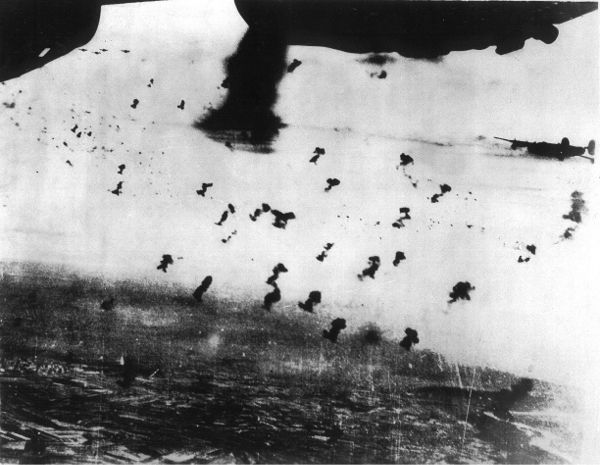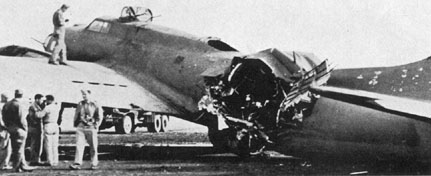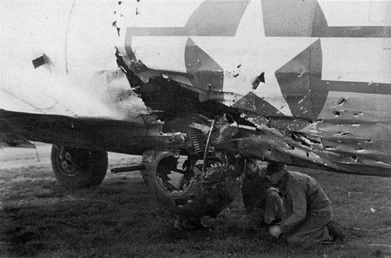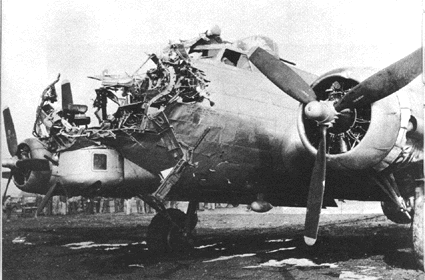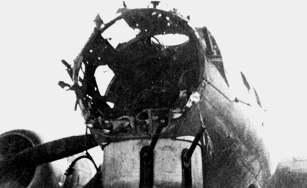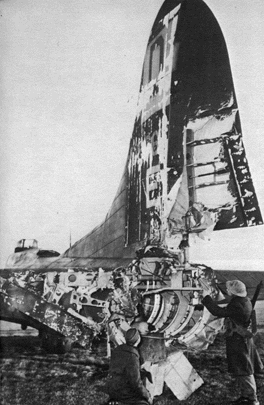|
Fliegerabwehrkanonen (Flak) AAA

German 88mm FLAK
FLAK - Its origin is the German phrase for antiaircraft defense cannon - FLiegerAbwehr Kanone.
FlaK-Fliegerabwehrkanone (German) AA artillery; also sometimes given as Flugabwehrkanone or Flugzeugabwehrkanone
World War II veterans who fought in the Mediterranean or European Theaters are far too familiar with the distinctive sound or “boom” of the German “Achtacht” or 88mm Flugzeugabwehrkanone (Flak) gun. Although originally designed as an anti-aircraft weapon and assigned to the Luftwaffe or German Air Force, during the Spanish Civil War and later, the North African campaign, the 88 earned a well-deserved reputation as a highly effective ground combat weapon used against tanks, troops and fortifications.
This famous weapon did, in fact, have its origins during the first World War, when guns of this caliber were used in an anti-aircraft role.

These guns were mounted on a 4 wheel trailers towed on specially fitted army lorries. When in action arms with jacks were swung out to form a secure firing platform. For that time these guns were extremely mobile and could swiftly be ready to fire.
The year was 1916 when these weapons entered service. They were manufactured by two factories, namely Krupps of Essen and Rheinmetall-Borsig. They were designated Geschütze 8.8 Kw Flak.

By the terms of the Versailles treaty in 1919, Krupps were forbidden to produce small caliber guns below 17 cm, and Rheinmetall were prohibited from making guns above this caliber. In order to overcome these restrictions by the Disarmament Commission, Krupp came to an agreement in 1921 with the Bofors Company in Sweden, whereby Bofors acquired the foreign rights for all Krupp gun designs in return for granting design and research facilities for Krupp`s design team at the Bofors Works.

By 1928, Krupp`s team, working in Sweden, had developed the plans for a new design of the 88 mm High Velocity Gun with the refinement of a semi-automatic breech which re-cocked the striker on ejection of the cartridge case. In 1931, a Krupp Designer took the finalized plans to Essen and production of the new 88 mm Gun began in Germany in 1933, by which time most of the Versailles Treaty Restrictions were being openly flouted by the Nazi Regime which gained absolute power in Germany that year.
The new Gun was designated 8.8 Flak 18, and first used in action with the German backed Nationalist Forces in the Spanish Civil War, 1936-39, where it was mainly employed in the anti-aircraft role for which it was designed. The Flak 18 was carried on a cruciform mounting with a wheeled bogie fore and aft for towing. Before firing it had to be lowered from the bogies and emplaced. Battle experience in Spain showed the need for a reduction in time taken to get the weapon into action, and provision for barrel changing after prolonged fire.

The famous German 'Eighty-Eight' in its original anti-aircraft guise. It later achieved fame as an anti-tank gun, but it remained the backbone of Germany's air defense throughout the war.
In 1936-37, therefore, improvements were made on the basic design, and the revised model, the 8.8 Flak 36, had a multi-section interchangeable barrel and a new trailer/ mounting, designated Sonderanhaenger 201, with an improved cruciform platform and a simpler method of lowering it for emplacement.
Lowering was effected by unwinding the winches on the two bogie/limber assemblies so that they tilted and thus lowered the platform to the ground. The bogie/limber assemblies were then wheeled clear and the cruciform side arms lowered. The mounting was leveled via the jacks on the end of each arm of the cruciform and spikes driven through the arms into the ground completed the emplacement of the weapon.

Most important improvement with the Sonderanhaenger 201, however, was the facility for firing the gun at a low angle against ground targets without the need for lowering the mounting to the ground. For firing from the traveling position, the side arms of the cruciform were lowered, the wheel brakes were applied by hand on the rear trailer, and chocks were placed behind the wheels. From 1938 many Flak 18s were retrospectively fitted on the Sonderanhaenger 201, and 50 of these were further modified so that one man could lay the gun for both line and elevation, though this feature was not continued.

Flak 37 mounted on the Sondergeschützanhänger (gun-trailer) 202.
From 1940 onwards both the Flak 18 and Flak 36 on the Sonderanhaenger ( Trailer ) 201 were fitted with shields to give the crew protection when firing at ground targets. Late models of the Flak 36 were fitted with a an improved trailer mounting, the Sonderanhaenger 202, which was fitted with twin wheels. The towing vehicle used for both Flak 18 and Flak36 was the Sd.Kfz 7 Tractor, built by Krauss-Maffei. This well known type of half track vehicle had seating for the gun crew and lockers at the rear for ammunition and equipment.

Sd.Kfz 7 Tractor, built by Krauss-Maffei (Half-track)
A similar weapon to the Flak 36 was the Flak 37 which was specifically produced for the anti aircraft role, and was fitted with a new data transmission system known as Übertragungser 37, suitable only for high angle engagements.

88mm Flak 37 on a special chassis
Both the Flak 18 and Flak 36 had a high angle range of 35,100 ft. and a horizontal range of 16,200 yards. They could fire high explosive (HE), armor piercing (AP) or smoke shells. The weight of the projectile was 20 lbs. (HE) or 21 lbs. (AP and smoke). Muzzle velocity was 2690 ft. per second with HE and 2620 ft. with AP.

In traveling order on the special trailer 201, the Flak 18 and 36 weighed 7 tons. Rate of fire was 15-20 rounds per minute.
The crew was 11 men, consisting of layer, trainer, breech worker, fuse setter, and five ammunition supply numbers, plus the detachment commander and the tractor driver. When firing against ground targets two ammunition numbers became the range and deflection setters respectively, and the fuse setter became an ammunition number. The senior ammunition number was in charge of ammunition supply and was the detachment second-in-command.

The famous 8.8 cm Flak 36 in action as anti-tank gun in Russia, 1942. Note the use of the stereoscopic range finder at right, which made possible for the 8.8 cm Flak 36 guns to hit targets at record ranges.
There were three methods of fire control, by radar or predictor though a data transmission system for AA fire, direct laying through the sights for the anti-tank role, and indirect fire in conjunction with a range-finder.
Flak 36s made their debut in the notorious anti-tank role at Halfaya during the Battle of Sollum, June 1941. Firing from concealed positions at short range, they destroyed 123 out of 238 attacking British tank. The Germans claimed a British tank for every 20 "88" rounds fired at Halfaya.

Deadly 88mm's were emplaced like this at Halfaya Pass on Rommel's orders. When dug in with their barrels only a little above ground they were difficult to detect and destroy. The white rings painted on its barrel, like notches on a gunslinger's revolver, tally the number of British tanks the formidable gun has destroyed.
The Flak 18 and Flak 36 models were produced in by far the greatest numbers of all the 8.8 series of guns. However, there were several important derivatives, less well known now because the war situation when they appeared restricted production, and they were less often seen in action.
Most important of all was the 8.8 cm Flak 41, developed and produced by Rheinmetall-Borsig as a true multi-purpose anti-tank/anti-aircraft weapon. It overcame the inherent disadvantage of the Flak 18 and Flak 36 in the anti-tank role by virtually turning the upright mount arrangement of the earlier models through 90 degrees to reduce the silhouette.

Flak 41
The barrel was lengthened and strengthened and the muzzle velocity increased to 3110 feet per second. Rate of fire was about 20 rounds per minute. The gun could be fired from the traveling position with the cruciform side arms extended, and the twin-wheeled Sonderanhaenger 202 was standard with this weapon. The cruciform was wider than that of the Flak 36. The Flak 41 entered service in 1943 and saw some service in the last stages of the North Africa campaign.
Krupp had been developing a similar multi-purpose 8.8 cm gun, but the Rheinmetall design, the Flak 41, was ready first, so it was decided to keep the Krupp model specifically as an anti-tank ( Pak ) and tank gun, since the use of the "88" in the anti-tank role in the desert and on the Russian Front had shown the desirability for a purpose-designed weapon of this caliber. Designated Pak 43, the Krupp gun had muzzle brake and was mounted on a field platform transported on single-wheel bogies similar to those of the Sonderanhaenger 201.

Pak 43
This weapon was lower than the Flak 41 but, of course lacked high angle elevation. The gun could be either lowered and emplaced for firing or it could be fired from the traveling position so long as the traverse was kept within 30 degrees either side of the longitudinal girders of the field platform. The barrel of the Pak 43 was 21 feet 7¼ inches long and the muzzle velocity with AP40 shot was 3705 feet per second. With APCBC, the MV was 3280 fps, and with HE, the MV was 2460 fps. With APCBC, it could penetrate 130 mm of armor at 1500 yards. This weapon entered service also in 1943.
Due to the urgency of the war situation at this time - and the scarcity of materials - many of the Pak pieces were mounted on a single axle field carriage, in which guise they were designated Pak 43/41. The carriage was of the split trail type and was of composite construction. The trail legs were the type used on the carriage of the 10.5 cm Model 18 howitzer and the solid disc wheels were of the type used with the 15 cm medium field howitzer. Weight of this weapon was 9600 lbs.

Pak 43/41
The tank and panzerjager guns in the 88 mm series had approximately the same performance, and fired the same ammunition as the Pak 43 and Pak 43/41. Some of the barrels were of the monobloc piece construction, others of the divided monobloc barrel type. The third model was also a divided monobloc barrel construction but the length of the rifling was increased. This was the gun that formed the armament of the Royal Tiger, Elefant, Panzerjager and the Jagd Panther.

Two Tigers w/Porsche turrets

Elefant

Two 'Ferdinands'
FReeper Foxhole Armed Services Links
 
   |


